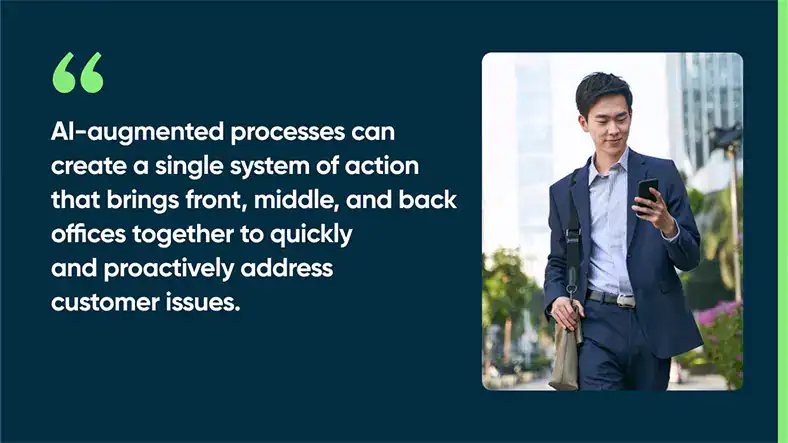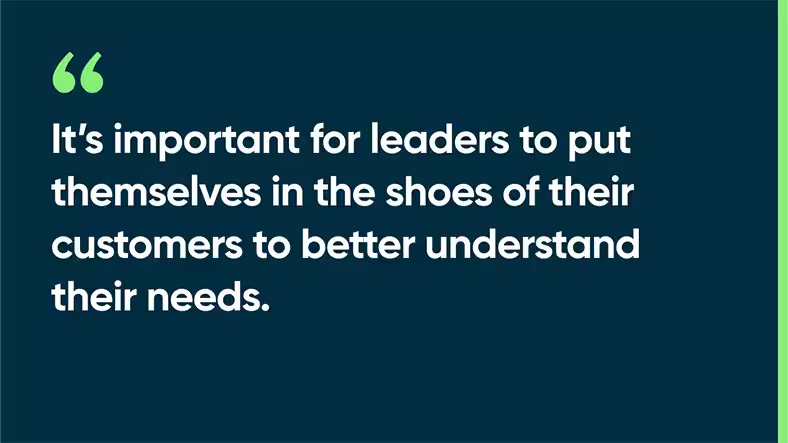Singapore spotlight: How to fix 4 top customer service issues
- admin
- May 23, 2024
- Product Insights

Singaporeans are growing increasingly frustrated with customer experience—and for good reason. ServiceNow and Lonergan polled 1,030 Singaporeans and found major gaps between what the people of Singapore expect from businesses and what they experience. This translates into millions of hours wasted on hold per year and a concerning drag on business productivity.
Singaporean organizations need to focus on the “customer” in customer service. Bad service experiences can turn consumers away. Business as usual tends to result in doing nothing. Adding new digital services to support customers is an investment choice.
Without addressing the underlying issues, Singaporean organizations are in danger of alienating their existing customer base—and losing potential business. Here are four major customer service issues we learned from the ServiceNow Customer Experience Intelligence Report for Singapore, along with advice on how to fix them.
1. “It takes too long to resolve my issues.”
Time spent on hold has increased over the past 12 months. Singaporeans spend an average of 16.1 hours—two working days—on hold. Issues and complaints typically take nearly an entire workweek (4.7 days) to resolve. This frustrates customers, hampers customer service agents, and decreases team productivity.
Finding the information needed to resolve issues is often an obstacle, especially when data is stored across isolated databases and departments.
Solution: AI-augmented processes can create a single system of action that brings front, middle, and back offices together to quickly and proactively address customer issues.
Automation and AI tools aimed at simplifying case management and resolution can help improve efficiency. A self-service portal containing troubleshooting guides and AI-driven chatbots for real-time assistance can empower customers to troubleshoot without waiting on hold.

2. “I’m not confident in the company’s service.”
Last year, Singaporeans faced one of the worst service disruptions ever. An estimated 810,000 online banking attempts at DBS and Citibank failed, as did roughly 2.5 million payments and ATM transactions, according to The Business Times. Banking wasn’t the only sector affected by disruptions.
Our research found that 70% of Singaporeans encountered service disruptions from key providers across a range of industries. On average, each Singaporean experienced two disruptions per year, yet many of those disrupted chose not to reach out to customer service for help. More worryingly, 29% feel businesses make it intentionally difficult to get proper service or resolution.
Solution: Be clear, honest, and transparent with your customers. Every organization experiences service disruptions. Prompt identification and trustworthy communication of these issues can help ensure they don’t turn customers away from the business for good.
It’s worth noting that 27% of Singaporeans feel that being warned about issues in advance is key to good customer service—an increase from 20% in 2020.
Being responsive works: 64% of Singaporeans who had five or more interactions with a company over the past year had a high level of trust in the organization’s ability to handle unexpected issues.
3. “I don’t like using chatbots.”
More than one-third of Singaporeans believe chatbots and automated services can’t understand the complexity of their issue. Although these consumers remain skeptical about chatbots’ usefulness, only 37% said they prefer to speak to a human.
We’re seeing a greater willingness by younger generations to solve issues themselves through digital channels. More than half (56%) of Generation Z reported using self-service options, such as guides, wikis, and automated services, more frequently last year.
This sentiment isn’t shared by older generations, however, as 55% of baby boomers prefer to speak directly to an agent.
This suggests that Singaporeans aren’t intrinsically chatbot-averse—they just want to feel valued and supported when contacting an organization.
Solution: Educate customers and support agents about how and when to use chatbots. For example, simple, low-urgency matters, such as requesting basic product information and scheduling appointments, can be easily handled by chatbots. Encourage this by providing options for seamless escalation if customers encounter problems.
Chatbots and automated systems that are designed well and fully integrated with a robust, inclusive customer support system can greatly improve resolution times and help customers avoid long waits on hold.

4. “I don’t feel heard.”
Singaporeans report having trouble connecting with organizations. Indeed, 40% say they experience poor service because “customer service is not listening to me”—a twofold increase from 2021.
This lack of connection hits younger customers harder. Gen Z is more likely than other generations to feel less heard (47%) and that organizations make it deliberately difficult to seek help (33%—the national average is 29%).
Solution: Tailor your customer experience strategy with greater empathy for customer pain points and acknowledgement of their preferences. It’s important for leaders to put themselves in the shoes of their customers to better understand their needs, as well as identify gaps in systems.
Leaders should also look for ways to consolidate existing customer and operational data to better understand different types of customers and their needs and behaviors. This can provide insights to help increase personalization and segmentation, as well as speed and accuracy when responding to service requests.
MedAire, an international emergency healthcare company, automated processes using ServiceNow Customer Service Management. The solution helped MedAire manage “fit-to-fly” health assessments and improve communication with more than 5,000 airports, airlines, and teams in handling medical emergencies midflight.
In-flight app integration provides crews with real-time access to information and guidance and has resulted in a 10% reduction in the time it takes to conduct a health assessment.
Closing the gaps
It will take more than technology to close Singapore’s customer experience gaps. Organizations will need to adopt fresh approaches to digital business strategy that can scale efficiently to address diverse customer needs.
Choosing the right platform to unify fragmented customer data and processes has never been more important. The faster Singapore organizations can act, the better—for the nation’s consumers and economy.
Find out how ServiceNow helps organizations deliver frictionless customer experience.
© 2024 ServiceNow, Inc. All rights reserved. ServiceNow, the ServiceNow logo, Now, and other ServiceNow marks are trademarks and/or registered trademarks of ServiceNow, Inc. in the United States and/or other countries. Other company names, product names, and logos may be trademarks of the respective companies with which they are associated.




